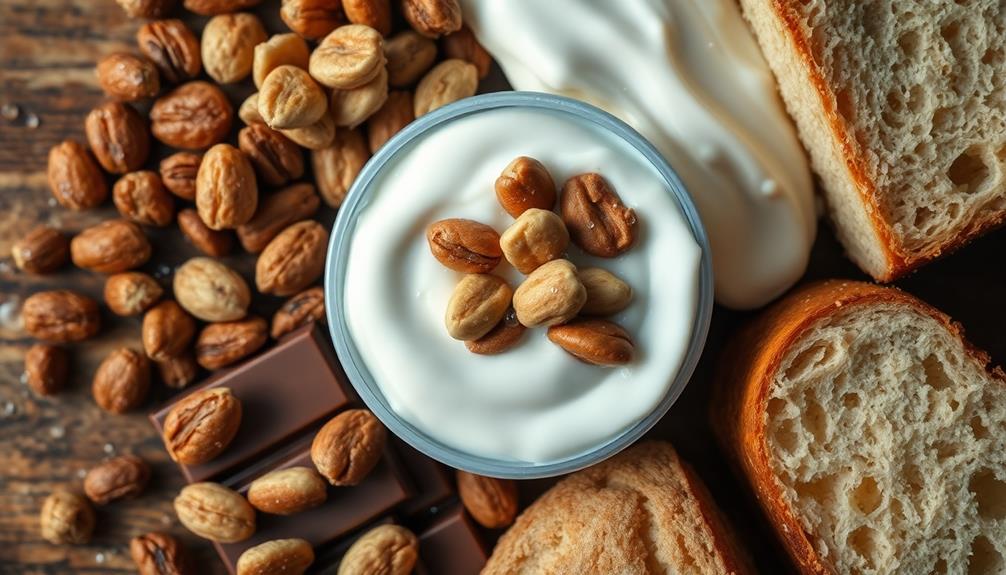Indonesian textiles are revolutionizing modern decor by combining traditional craftsmanship with contemporary design. Fabrics like Batik and Ikat don't just add beauty; they bring cultural depth to your spaces. You can find unique pieces that use sustainable materials, highlighting eco-conscious practices. As artisans blend historical techniques with modern aesthetics, these textiles become versatile decor options, perfect for any home. The growing global demand for authentic and sustainable products is amplifying Indonesia's presence in the design world. If you're curious about the impact of this vibrant textile scene, there's much more to explore about its cultural significance and future trends.
Key Takeaways
- Indonesian textiles like Batik and Ikat blend traditional craftsmanship with modern aesthetics, enriching contemporary decor with cultural depth.
- The industry's focus on sustainability and ethical practices enhances the appeal of Indonesian textiles in a global market increasingly valuing eco-friendly products.
- Technological innovations, such as digital printing and automation, improve design diversity and efficiency in textile production.
- Collaborations with international designers promote cultural exchange, elevating the visibility of Indonesian textiles in the global decor scene.
- The fusion of traditional techniques with modern designs creates unique decorative pieces, ensuring Indonesian textiles remain influential in home decor trends.
Economic Impact of Textiles
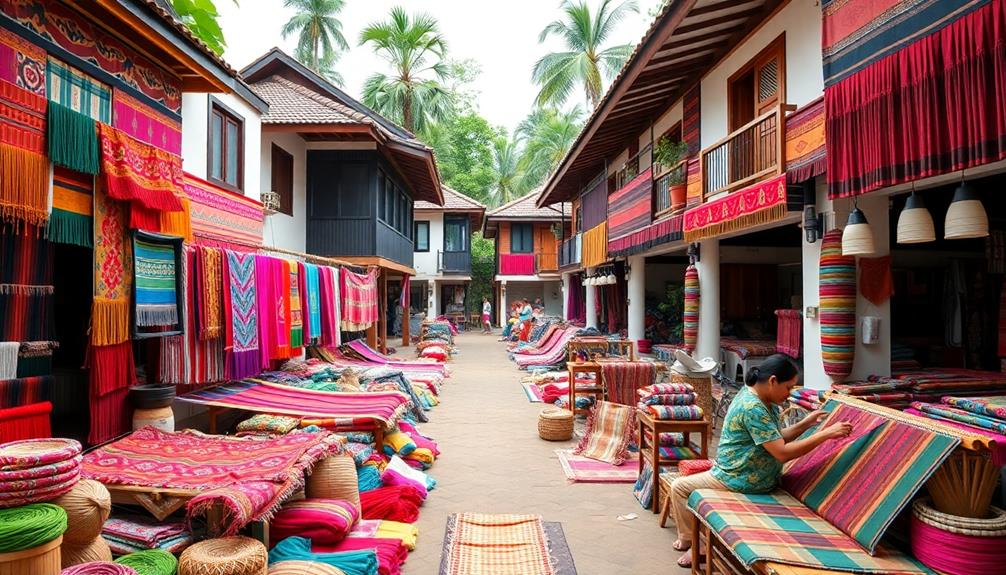
When it comes to Indonesia's economy, the textile industry stands out as an essential player. Valued at USD 13.83 billion in 2024 and projected to reach USD 18.10 billion by 2029, its economic impact is undeniable. This sector employs nearly 2 million people, providing crucial livelihoods and supporting local economies across the nation.
The use of vibrant textiles in decor, such as Indonesian decorative pillows, further enhances the appeal of these products, merging comfort with cultural heritage.
In 2022, textile exports were worth USD 12 billion, positioning Indonesia as a significant contender in the global textile market. With an annual growth rate of 5.84%, the industry showcases its resilience and adaptability amid global economic challenges.
The rise of the middle class has fueled increased consumer demand for both traditional textiles, rich in cultural significance, and modern Indonesian textiles that reflect contemporary tastes.
This blend of cultural richness and economic importance not only sustains local artisans but also enhances the global appeal of Indonesian textiles. As you explore the intricate designs and diverse materials, you'll see how this sector not only contributes to economic stability but also preserves the heritage and craftsmanship that define Indonesia's identity.
Investing in these textiles means supporting a thriving industry that celebrates its past while embracing the future.
Cultural Heritage in Modern Decor
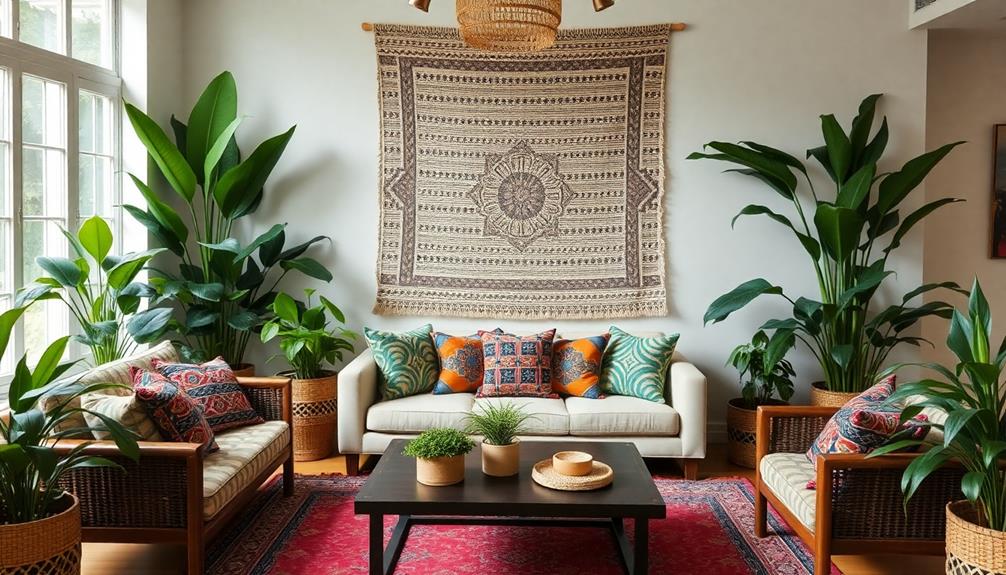
The vibrant patterns and colors of Indonesian textiles, like Batik and Ikat, seamlessly find their place in modern decor, enriching contemporary spaces with cultural depth. By marrying traditional Indonesian craftsmanship with modern technology, these textiles not only preserve cultural heritage but also resonate with younger generations who crave unique decor options. Brands like Oerip are paving the way, showcasing how these intricate designs can be both timeless and trendy.
Here's a quick look at how Indonesian textiles enhance modern decor:
| Textile Type | Cultural Significance | Eco-Friendly Features |
|---|---|---|
| Batik | Recognized by UNESCO as Intangible Cultural Heritage | Made from sustainable materials |
| Ikat | Represents community weaving traditions | Often dyed with natural pigments |
| Songket | Embellished with gold/silver threads, symbolizing wealth | Supports local artisans with ethical practices |
| Tenun | Handwoven, showcasing unique regional patterns | Utilizes eco-conscious methods |
Incorporating these textiles into your home decor allows you to celebrate cultural heritage while embracing sustainability. You'll find that each piece tells a story, making your space not just beautiful, but meaningful.
Challenges Facing the Industry
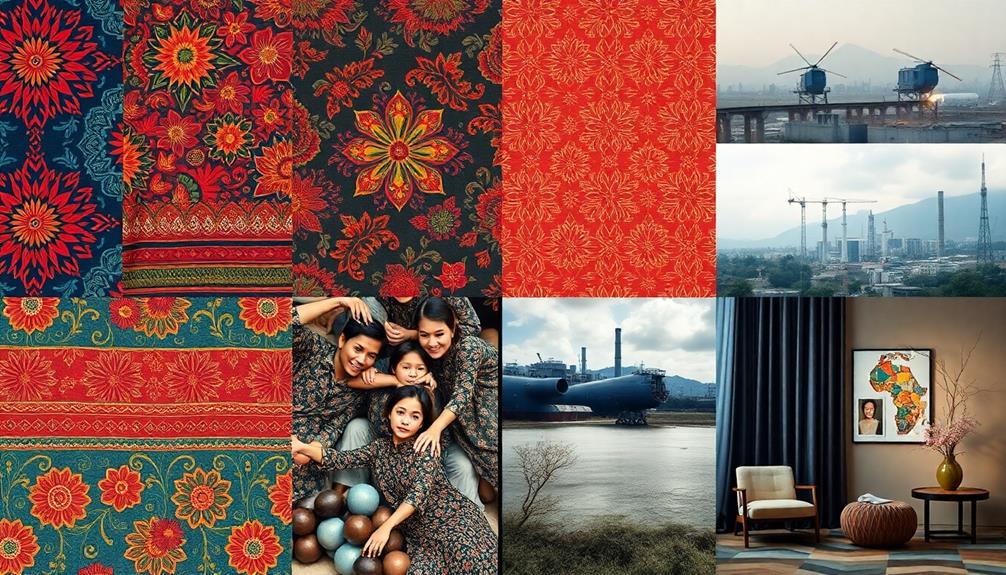
Despite its rich cultural heritage and unique craftsmanship, the Indonesian textile industry faces significant challenges that threaten its viability. High production costs, especially for electricity and labor, impact your profitability and competitiveness in a global market that's increasingly tough.
Additionally, the appreciation for traditional craftsmanship, such as that seen in Indonesian decor masks, showcases the importance of preserving cultural artistry. With 70-80% of machinery over 25 years old, outdated production methods hinder efforts to modernize. This aging equipment makes it difficult to streamline processes and boost efficiency.
You're also grappling with intense competition from countries like Vietnam, Bangladesh, and China, which offer lower production costs. This situation has stalled export growth for Indonesian textiles, forcing you to reconsider strategies. The influx of cheaper textile products, both legal and illegal, puts even more pressure on domestic manufacturers.
To survive, you need to innovate and adapt. Economic fluctuations and supply chain disruptions further complicate the landscape, making it hard to sustain growth.
As you navigate these challenges facing the industry, it's vital to focus on preserving traditional craftsmanship while finding ways to modernize and remain competitive. Your ability to adapt could be the key to securing a brighter future for modern Indonesian textiles.
Technological Innovations in Textiles

In recent years, Indonesian textiles have embraced a wave of technological innovations that transform production processes and design possibilities. You'll notice that the textile industry is adopting automation and digital printing technologies to boost efficiency, allowing for modern Indonesian textile designs that resonate with contemporary consumers. This shift not only enhances productivity but also diversifies design options, moving away from traditional methods.
Additionally, the use of natural materials in Balinese design complements these innovative textiles, creating a harmonious blend of tradition and modernity.
Moreover, cloud-based software solutions like Apparel ERP and Textile ERP are being integrated to streamline operations. This improves data analytics, leading to better decision-making in textile production. The Indonesian government's Industry 4.0 initiative further encourages advanced technology adoption, aiming to elevate the country's global market position.
Nanotechnology is another frontier that's being explored, enhancing textile performance and resulting in more durable, functional, and eco-friendly materials.
As you engage with these innovations, you'll see a commitment to ethical production methods reflected in the increased use of natural dyes and sustainable materials. Together, these technological innovations aren't just modernizing the textile industry; they're also paving the way for a brighter, more competitive future in Indonesian textiles.
The Role of Sustainability

Sustainable practices are reshaping the Indonesian textile industry, making it a leader in eco-conscious production. You'll find that artisans are increasingly using sustainable materials and natural dyes, which notably reduce environmental impact. This shift toward eco-friendly practices not only helps the planet but also promotes responsible production methods.
Additionally, the vibrant artistry of Indonesian decor masks reflects a commitment to sustainability, showcasing the skills of local artisans while preserving cultural heritage.
Investments in biodegradable textiles are on the rise, as demand grows for materials that minimize waste and support a circular economy. This means that when you choose Indonesian textiles, you're supporting a system that prioritizes sustainability.
Traditional craftsmanship remains at the heart of this movement, allowing artisans to maintain their cultural heritage while contributing to environmental conservation.
Moreover, ethical labor practices are emphasized alongside these sustainable efforts. Fair wages and safe working conditions are essential, ensuring that the artisans involved in textile production are treated with respect.
The integration of technology and automation in manufacturing enhances efficiency, aligning with sustainability goals by optimizing resource use and reducing the carbon footprint.
Global Engagement and Market Trends
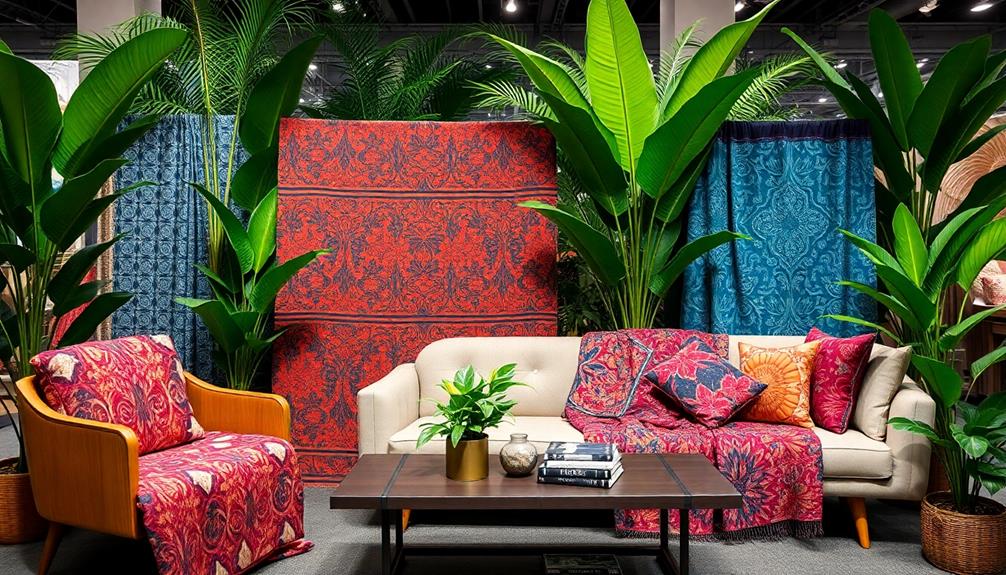
Amidst a growing global appreciation for unique textiles, Indonesia's textile industry is rapidly evolving, positioning itself as a formidable player in the international market. Valued at USD 13.83 billion in 2024, it's projected to reach USD 18.10 billion by 2029, driven by increasing global engagement and demand for distinctive designs in modern decor. The incorporation of traditional Indonesian style home decor elements into modern textiles further enhances their appeal, showcasing the richness of the country's cultural heritage.
With textile exports hitting USD 12 billion in 2022, Indonesia has attracted international interest through its rich cultural heritage and innovative textile practices. Networking events like INDO INTERTEX not only showcase these innovations but also help Indonesian brands connect with global audiences, particularly Millennials and Gen-Z consumers, who are keen for unique, traditional textiles reimagined for contemporary settings.
The fusion of traditional techniques with modern aesthetics captivates buyers worldwide. Brands like Oerip highlight accessible adaptations of classic fabrics across 13 countries, appealing to those who value both heritage and modern design.
Additionally, Indonesia's commitment to sustainability resonates with global consumers, as the industry increasingly embraces eco-friendly practices and biodegradable materials. This focus guarantees that Indonesian textiles not only enhance modern decor but also align with the ethical values of today's market.
Traditional Techniques With Contemporary Flair
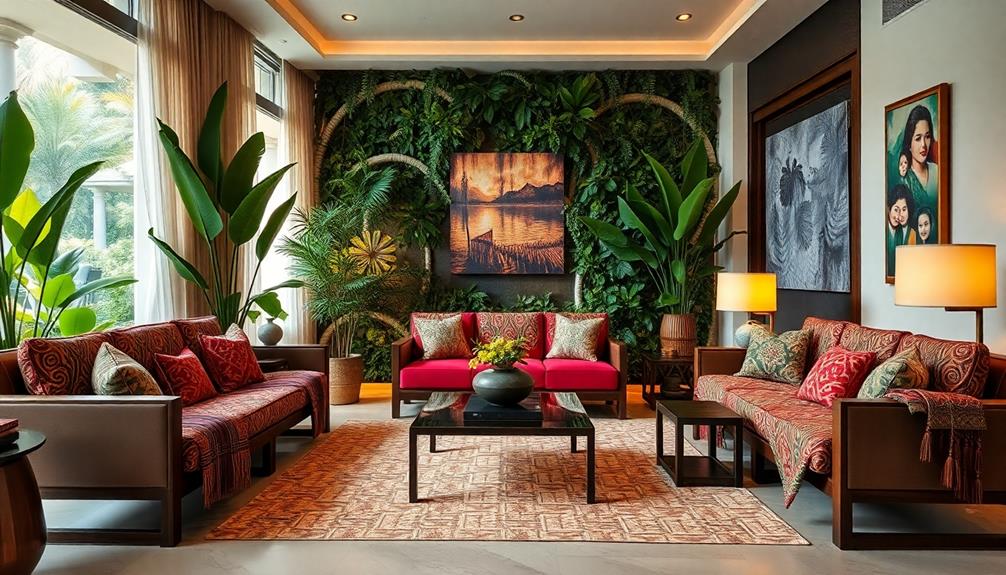
The modern textile landscape is witnessing a remarkable shift as Indonesian artisans blend traditional techniques with contemporary flair. You'll find that textiles like Batik and Ikat are evolving to captivate younger consumers, merging vibrant modern design with the rich cultural heritage these fabrics represent.
Furthermore, these textiles often draw inspiration from local myths and folklore, much like the intricate designs found in Indonesian decor masks. Brands such as Oerip Indonesia are leading the charge, making traditional fabrics accessible and fashionable across 13 countries. They're redefining the notion that Indonesian textiles are only for older generations.
By integrating historical methods with innovative design principles, these artisans create unique decorative pieces that meet the growing demand for stylish, culturally rich home decor among the middle class.
Furthermore, the incorporation of technology, such as digital printing and advanced design tools, elevates the aesthetic quality while preserving the intricate craftsmanship that characterizes Indonesian textile artistry.
As these traditional textiles gain recognition in global haute couture, their application in home decor reflects a broader appreciation for cultural heritage and sustainable practices in modern design.
You can truly see how this blend of old and new not only honors tradition but also fosters a fresh, dynamic approach to decor that resonates with today's discerning consumers.
Artisan Contributions to Modern Design

In the vibrant world of modern design, Indonesian artisans are making waves by infusing traditional textile techniques like Batik and Ikat into contemporary aesthetics. These artisan contributions not only preserve cultural heritage but also enhance the uniqueness of modern decor, appealing to younger audiences and global markets.
| Traditional Techniques | Modern Applications |
|---|---|
| Batik | Wall art |
| Ikat | Upholstery |
| Handwoven fabrics | Decorative cushions |
| Natural dyes | Eco-friendly decor items |
| Cultural motifs | Fashion collaborations |
Initiatives like Oerip Indonesia showcase how these exquisite fabrics can be modernized and marketed as affordable home decor, making them accessible across 13 countries. Additionally, artisans are embracing sustainable practices, focusing on eco-friendly materials that align with global trends toward responsible consumption. The recognition of Indonesian textiles in international fashion and design circles, including collaborations with renowned designers and celebrities, underscores the global impact of these artisans. By merging tradition with innovation, Indonesian artisans are not just creating decor; they're weaving stories that resonate across cultures, enriching your space with depth and character.
Future Directions for Indonesian Textiles

As we look ahead, Indonesian textiles are poised to play an essential role in shaping the future of modern decor. With the textile industry projected to grow from USD 13.83 billion in 2024 to USD 18.10 billion by 2029, the relevance of these fabrics in contemporary design is undeniable.
Traditional Indonesian housing styles often incorporate vibrant textiles, enhancing the cultural richness of the interiors, which reflects the country's diverse heritage. Traditional homes often serve as community gathering spaces. You'll notice that the integration of traditional techniques like Batik, Ikat, and Songket with modern aesthetics creates unique decor items that resonate with younger consumers, especially Millennials and Gen-Z.
Sustainability is becoming a focal point in the Indonesian textile industry, emphasizing eco-friendly materials and practices that align with global environmental trends. The adoption of digital tools and automation in production is revolutionizing design possibilities, enabling intricate patterns and customizable decor that reflect Indonesia's rich cultural heritage.
As international recognition of Indonesian textiles grows, collaborations with global designers and brands are elevating their visibility within the home decor market. This blend of tradition and innovation not only enhances artistic expressions but also guarantees that Indonesian textiles remain a significant influence in modern decor for years to come.
Frequently Asked Questions
What Is the Indonesian Textile Technique?
Indonesian textile techniques include Batik, where you apply wax and dye for intricate designs; Ikat, involving tie-dyed threads for unique patterns; and Songket, a handwoven fabric with gold or silver threads used in ceremonies.
What Is the Outlook for the Textile Industry in Indonesia in 2024?
The outlook for Indonesia's textile industry in 2024 is promising. You'll see growth driven by technological advancements and sustainable practices, with projected revenues reaching USD 13.83 billion, enhancing both global competitiveness and job opportunities.
What Is the Fabric Design of Indonesia?
When you explore Indonesian fabric design, you'll find vibrant tapestries that tell stories. Batik's intricate patterns, Ikat's blurred edges, and Songket's shimmering threads symbolize a rich cultural heritage, inviting you into Indonesia's colorful narrative.
What Is the Most Famous Textile of Indonesia?
The most famous textile of Indonesia is Batik. You're captivated by its intricate designs and rich cultural significance, which date back to ancient Java. You'll appreciate how its unique wax-resist dyeing technique creates stunning patterns.
Conclusion
Incorporating Indonesian textiles into your decor not only infuses your space with vibrant visuals but also honors a rich cultural tapestry. By embracing sustainable styles and supporting skilled artisans, you're championing a creative community. As trends transform and technology thrives, you'll find that these fabrics fuse tradition with modernity, creating a beautiful balance. So, step into this stunning world of textiles and let your home tell a story of heritage, harmony, and high design.





